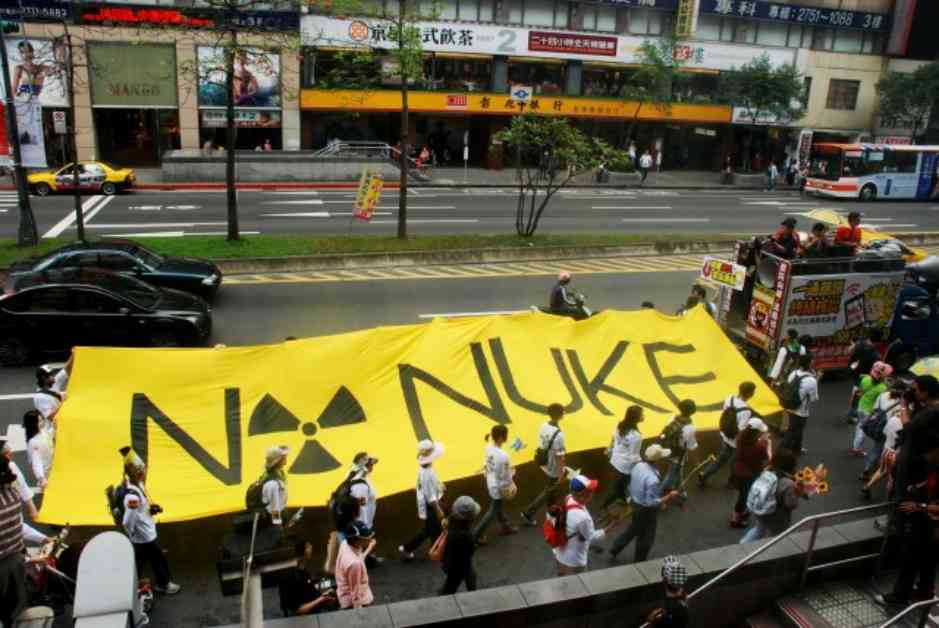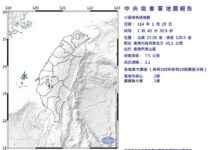**Taiwan’s Energy Transition: A Legal Perspective**
Taiwan’s journey towards a nuclear-free homeland and energy transition has been a complex yet crucial process shaped by historical, legal, and geopolitical factors. In this article, we delve into Taiwan’s steps towards achieving a nuclear-free homeland, the challenges and opportunities that have emerged along the way, and the legal reforms influencing the country’s energy landscape.
**Taiwan’s Pursuit of a Nuclear-Free Homeland**
The vision of a nuclear-free homeland in Taiwan was first articulated in the Basic Environment Act of 2002, although no specific timeline was set at that time. The Fukushima nuclear disaster in Japan in 2011 served as a catalyst for Taiwan’s civil society to push towards a nuclear-free future. In 2016, the ruling Democratic Progressive Party (DPP) set a goal to achieve a nuclear-free homeland by 2025, with a power generation mix comprising 20% renewable energy and 80% thermal energy.
As of 2017, Taiwan’s national power mix consisted of less than 10% nuclear power, about 5% renewable power, and over 80% thermal power. However, in 2022, the Executive Yuan announced a delay in achieving the 20% renewable energy target by 2025, pushing it to 2026. President William Lai, upon taking office in 2024, referenced the “Taiwan 2050 Net Zero Emissions Pathway” and proposed phased goals for the power mix by 2030 and 2050.
The crucial factor in achieving Taiwan’s nuclear-free goal lies in the fate of Nuclear Power Plant No. 3, whose operating license is set to expire in 2025. Taiwan Power Company (TPC) would need to apply for a license extension well in advance to assess the risks scientifically. Missing the application deadline would pave the way for Taiwan to become the first country in East Asia to transition from nuclear power generation to nuclear power-free status in 2025.
**Electricity Law and Renewable Energy Development**
The Electricity Act in Taiwan underwent significant revisions in 2017 to promote sustainability, reform the electricity market, phase out nuclear power, and advance renewable energy. The amendments aimed to open the electricity market for competition while retaining national control of the grid and infrastructure to ensure equity.
In 2018, a referendum led to further changes in the Electricity Act, although public misconceptions about Taiwan’s energy structure influenced the outcome. A survey revealed that many respondents believed nuclear power was a primary energy source, unaware that it accounted for less than 10% of total power generation in 2017. To address these misconceptions, the Legislative Yuan amended the Electricity Act in 2019, removing the provision for nuclear power plants to cease operation by 2025.
In 2024, the Executive Yuan proposed further amendments to the Electricity Act, considering the impact of rising power generation costs due to global events like the Russia-Ukraine war. Taiwan Power Company recommended maintaining its integrated utility status to stabilize power supply and align with government policy goals. The revision aimed to establish an electricity regulation and supervision mechanism to address emerging challenges in policy design.
**Challenges in Taiwan’s Energy Transition and Legal Reforms**
Taiwan’s energy transition faces multifaceted challenges, including concerns over natural gas usage, nuclear energy operation, environmental impacts, and energy security vulnerabilities. Geopolitical tensions, such as those with China, highlight the need for robust energy security measures, particularly in liquefied natural gas (LNG) supply.
To enhance energy security, President Lai’s administration mandated increased reserves of LNG to mitigate supply chain disruptions during crises. The focus on community renewable energy as a disaster risk reduction strategy underscores the importance of decentralizing power generation and increasing energy autonomy.
Moreover, Taiwan’s emphasis on information and communication technology-related industries has led to revisions in the Electricity Act and Renewable Energy Development Act to promote sustainable and digital transitions. The concept of “Taiwan Triaxial Transitions, TW3X” integrates legal, sustainable, and digital transitions, offering opportunities for new industry development and knowledge generation.
Despite progress in legal reforms, challenges persist in improving energy supervision and regulation, as evidenced by delays in establishing an independent electricity regulatory agency and provisions for larger electricity consumers. The ongoing dialogue on the necessity of amending the Electricity Act reflects Taiwan’s evolving energy landscape and the need to adapt to international energy developments and price fluctuations.
As Taiwan navigates its energy transition journey, the integration of citizen power plants and community renewable energy emerges as a critical strategy to address energy security concerns, enhance disaster resilience, and promote sustainable development. By aligning legal reforms with environmental justice and climate action, Taiwan aims to achieve a greener, more resilient energy future.
**Conclusion**
In conclusion, Taiwan’s pursuit of a nuclear-free homeland and energy transition is a complex yet transformative process guided by legal reforms, environmental imperatives, and geopolitical realities. As the country navigates the challenges and opportunities of its energy landscape, legal adjustments play a crucial role in shaping a sustainable and secure energy future. By addressing misconceptions, enhancing energy literacy, and embracing community-led renewable energy initiatives, Taiwan aims to chart a path towards a cleaner, more resilient energy future.












